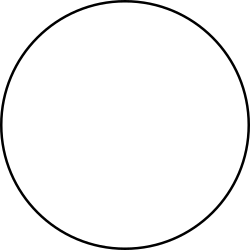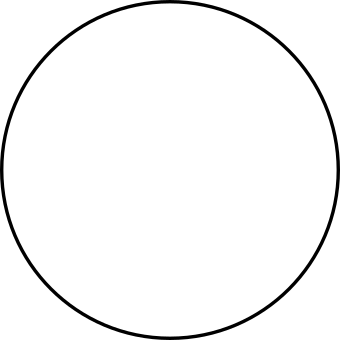List of asteroid close approaches to Earth in 2020
| Time of discovery of asteroids which came closer to Earth than the Moon in 2020 |
|
Below is the list of asteroid close approaches to Earth in 2020.
Timeline of known close approaches less than one lunar distance from Earth

A list of known near-Earth asteroid close approaches less than 1 lunar distance (0.0025696 AU (384,410 km; 238,860 mi)) from Earth in 2020.[note 1]
For reference, the radius of Earth is about 0.0000426 AU (6,370 km; 3,960 mi) or 0.0166 lunar distances. Geosynchronous satellites have an orbit with semi-major axis length of 0.000282 AU (42,200 km; 26,200 mi) or 0.110 lunar distances. A number of known asteroids came closer than this in 2020, including 2020 CW and 2020 JJ, which approached Earth within 0.05 lunar distances in February and May 2020, respectively.
While most asteroids on this list are confirmed, well-observed unconfirmed objects with a 50% or greater chance of passing within 1 LD of the Earth are included as well.
Rows highlighted red indicate objects which were not discovered until after closest approach
Rows highlighted yellow indicate objects discovered less than 24 hours before closest approach
Rows highlighted green indicate objects discovered more than one week before closest approach
Rows highlighted turquoise indicate objects discovered more than 7 weeks before closest approach
Rows highlighted blue indicate objects discovered more than one year before closest approach (i.e. objects successfully cataloged on a previous orbit, rather than being detected during final approach)
| Date of closest approach |
Date discovered |
Object | Nominal geocentric distance (AU)[note 2] |
Nominal geocentric distance (LD) |
Size (m) (approximate) |
(H) (abs. mag) |
Closer approach to Moon[note 3] |
Refs |
|---|---|---|---|---|---|---|---|---|
| 2020-01-02 | 2020-01-02 | 2020 AP1 | 0.002185 AU (326,900 km; 203,100 mi) | 0.85 | 3.2–7.1 | 29.6 | ✓ | data · 2020 AP1 |
| 2020-01-20 | 2020-01-22 | 2020 BK3 | 0.001998 AU (298,900 km; 185,700 mi) | 0.78 | 11–24 | 27 | — | data · 2020 BK3 |
| 2020-01-22 | 2020-01-23 | 2020 BB5 | 0.001775 AU (265,500 km; 165,000 mi) | 0.69 | 3.1–6.9 | 29.8 | — | data · 2020 BB5 |
| 2020-01-25 | 2020-01-24 | 2020 BH6 | 0.000469 AU (70,200 km; 43,600 mi) | 0.18 | 5.2–12 | 28.5 | — | data · 2020 BH6 |
| 2020-01-27 | 2020-01-28 | 2020 BA13 | 0.001320 AU (197,500 km; 122,700 mi) | 0.51 | 4.6–10 | 29 | — | data · 2020 BA13 |
| 2020-01-28 | 2020-01-30 | 2020 BA15 | 0.002517 AU (376,500 km; 234,000 mi) | 0.98 | 9–20 | 27.5 | ✓ | data · 2020 BA15 |
| 2020-01-29 | 2020-01-28 | 2020 BZ13 | 0.000716 AU (107,100 km; 66,600 mi) | 0.28 | 2.9–6.5 | 29.9 | — | data · 2020 BZ13 |
| 2020-01-31 | 2020-02-02 | 2020 CZ | 0.002105 AU (314,900 km; 195,700 mi) | 0.82 | 3.7–8.2 | 29.4 | — | data · 2020 CZ |
| 2020-01-31 | 2020-02-02 | 2020 CJ | 0.002362 AU (353,400 km; 219,600 mi) | 0.92 | 11–25 | 27 | ✓ | data · 2020 CJ |
| 2020-02-01 | 2020-02-01 | 2020 CW | 0.000105 AU (15,700 km; 9,800 mi) | 0.04 | 0.83–1.9 | 32.6 | — | data · 2020 CW |
| 2020-02-02 | 2020-02-01 | 2020 CA | 0.001465 AU (219,200 km; 136,200 mi) | 0.57 | 3.2–7.2 | 29.4 | — | data · 2020 CA} |
| 2020-02-03 | 2020-01-23 | 2020 BT14 | 0.001256 AU (187,900 km; 116,800 mi) | 0.49 | 7.5–17 | 27.8 | — | data · 2020 BT14 |
| 2020-02-04 | 2020-02-05 | 2020 CQ1 | 0.000431 AU (64,500 km; 40,100 mi) | 0.17 | 4.6–10 | 28.8 | — | data · 2020 CQ1 |
| 2020-02-13 | 2020-02-16 | 2020 DU | 0.002172 AU (324,900 km; 201,900 mi) | 0.85 | 4.9–11 | 28.7 | ✓ | data · 2020 DU |
| 2020-02-13 | 2020-02-15 | 2020 CD3 | 0.000315 AU (47,100 km; 29,300 mi) | 0.12 | 1.2–2.8 | 31.7 | — | data · 2020 CD3 |
| 2020-02-14 | 2020-02-15 | 2020 CQ2 | 0.000990 AU (148,100 km; 92,000 mi) | 0.39 | 5–11 | 28.7 | — | data · 2020 CQ2 |
| 2020-02-18 | 2020-02-17 | 2020 DA1 | 0.020219 AU (3,024,700 km; 1,879,500 mi) | 0.50 | 3–6.7 | 29.7 | — | data · 2020 DA1 |
| 2020-02-18 | 2020-02-16 | 2020 DW | 0.001612 AU (241,200 km; 149,800 mi) | 0.63 | 2.3–5.1 | 30.3 | — | data · 2020 DW |
| 2020-02-25 | 2020-02-27 | 2020 DR4 | 0.000622 AU (93,000 km; 57,800 mi) | 0.24 | 3–6.8 | 29.7 | — | data · 2020 DR4 |
| 2020-03-14 | 2020-03-17 | 2020 FD2 | 0.002190 AU (327,600 km; 203,600 mi) | 0.85 | 19–43 | 25.7 | — | data · 2020 FD2 |
| 2020-03-18 | 2020-03-16 | 2020 FD | 0.001715 AU (256,600 km; 159,400 mi) | 0.67 | 7.9–18 | 27.6 | ✓ | data · 2020 FD |
| 2020-03-19 | 2020-03-23 | 2020 FG4 | 0.001262 AU (188,800 km; 117,300 mi) | 0.49 | 10–23 | 27.1 | — | data · 2020 FG4 |
| 2020-03-22 | 2020-03-19 | 2020 FL2 | 0.000987 AU (147,700 km; 91,700 mi) | 0.38 | 16–35 | 26.1 | — | data · 2020 FL2 |
| 2020-03-25 | 2020-03-24 | 2020 FJ4 | 0.001716 AU (256,700 km; 159,500 mi) | 0.67 | 3.4–7.6 | 29.5 | — | data · 2020 FJ4 |
| 2020-03-31 | 2020-03-31 | 2020 FB7 | 0.000521 AU (77,900 km; 48,400 mi) | 0.20 | 16–36 | 26.1 | — | data · 2020 FB7 |
| 2020-04-01 | 2020-04-02 | 2020 GO1 | 0.000461 AU (69,000 km; 42,900 mi) | 0.18 | 7.9–18 | 27.6 | — | data · 2020 GO1 |
| 2020-04-03 | 2020-04-02 | 2020 GH | 0.000837 AU (125,200 km; 77,800 mi) | 0.33 | 4.2–9.3 | 29 | — | data · 2020 GH |
| 2020-04-05 | 2020-04-05 | 2020 GY1 | 0.000537 AU (80,300 km; 49,900 mi) | 0.21 | 13–28 | 26.6 | — | data · 2020 GY1 |
| 2020-04-15 | 2020-04-16 | 2020 HO | 0.001929 AU (288,600 km; 179,300 mi) | 0.75 | 4.6–10 | 28.8 | — | data · 2020 HO |
| 2020-04-15 | 2020-04-11 | 2020 GH2 | 0.002401 AU (359,200 km; 223,200 mi) | 0.93 | 13–28 | 26.6 | — | data · 2020 GH2 |
| 2020-04-22 | 2020-04-24 | 2020 HM6 | 0.001088 AU (162,800 km; 101,100 mi) | 0.42 | 13–28 | 26.6 | ✓ | data · 2020 HM6 |
| 2020-04-22 | 2020-04-23 | 2020 HF5 | 0.000979 AU (146,500 km; 91,000 mi) | 0.38 | 12–27 | 26.7 | — | data · 2020 HF5 |
| 2020-04-22 | 2020-04-23 | 2020 HU7 | 0.000869 AU (130,000 km; 80,800 mi) | 0.34 | 3.1–7 | 29.6 | — | data · 2020 HU7 |
| 2020-04-24 | 2020-04-19 | 2020 HX3 | 0.001688 AU (252,500 km; 156,900 mi) | 0.66 | 9.8–22 | 27.2 | ✓ | data · 2020 HX3 |
| 2020-04-26 | 2020-04-27 | 2020 HT8 | 0.000986 AU (147,500 km; 91,700 mi) | 0.38 | 5.8–13 | 28.3 | — | data · 2020 HT8 |
| 2020-04-27 | 2020-04-22 | 2020 HP6 | 0.000841 AU (125,800 km; 78,200 mi) | 0.33 | 6.4–14 | 28.1 | — | data · 2020 HP6 |
| 2020-04-28 | 2020-04-27 | 2020 HS7 | 0.000286 AU (42,800 km; 26,600 mi) | 0.11 | 4.1–9.2 | 29.1 | — | data · 2020 HS7 |
| 2020-04-30 | 2020-05-02 | 2020 JG | 0.001429 AU (213,800 km; 132,800 mi) | 0.55 | 19–41 | 25.8 | ✓ | data · 2020 JG |
| 2020-05-03 | 2020-05-01 | 2020 JA | 0.001598 AU (239,100 km; 148,500 mi) | 0.62 | 9.6–21 | 27.2 | — | data · 2020 JA |
| 2020-05-04 | 2020-05-04 | 2020 JJ | 0.000090 AU (13,500 km; 8,400 mi) | 0.03 | 2.7–6 | 30 | — | data · 2020 JJ |
| 2020-05-05 | 2020-05-04 | 2020 JN | 0.001666 AU (249,200 km; 154,900 mi) | 0.65 | 9–20 | 27.4 | ✓ | data · 2020 JN |
| 2020-05-28 | 2020-05-26 | 2020 KF5 | 0.001652 AU (247,100 km; 153,600 mi) | 0.64 | 3.5–7.8 | 29.4 | — | data · 2020 KF5 |
| 2020-05-28 | 2020-05-24 | 2020 KJ4 | 0.000959 AU (143,500 km; 89,100 mi) | 0.37 | 2.8–6.2 | 29.9 | — | data · 2020 KJ4 |
| 2020-05-29 | 2020-05-26 | 2020 KC5 | 0.002483 AU (371,500 km; 230,800 mi) | 0.97 | 9–20 | 27.4 | — | data · 2020 KC5 |
| 2020-06-05 | 2020-06-07 | 2020 LD | 0.002051 AU (306,800 km; 190,700 mi) | 0.80 | 89–200 | 22.4 | — | data · 2020 LD |
| 2020-09-01 | 2011-03-11 | 2011 ES4 | ~0.0008 AU (120,000 km; 74,000 mi) | 0.32+0.13 −40.94[note 4] |
22–49 | 25.4 | ? | data · 2011 ES4 |
Warning times by size
This sub-section visualizes the warning times of the close approaches listed in the above table, depending on the size of the asteroid. The sizes of the charts show the relative sizes of the asteroids to scale. For comparison, the approximate size of a person is also shown. This is based the absolute magnitude of each asteroid, an approximate measure of size based on brightness.
Abs Magnitude 30 and lesser

(size of a person for comparison)
Abs Magnitude 29-30
Absolute Magnitude 28-29
Absolute Magnitude 27-28
Absolute Magnitude 26-27
Absolute Magnitude 25-26
Greater than Absolute Magnitude 25 (largest)
- After closest approach: 1 (100.0%)
- < 24 hours before: 0 (0.0%)
- up to 7 days before: 0 (0.0%)
- > one week before: 0 (0.0%)
- > 7 weeks before: 0 (0.0%)
- > one year before: 0 (0.0%)
Notes
- ^ For a list of current Earth close approaches see Close Approaches and NEO Earth Close Approaches
- ^ Distance from the center of Earth to the center of the object. See the NASA/JPL Solar System Dynamics Glossary: Geocentric. Earth has a radius of approximately 6,400 km.
- ^ Objects that approached closer to the Moon than Earth are marked with a check.
- ^ 2011 ES4 may or may not pass within 1 LD from Earth due to large uncertainties in the asteroid's orbit.
Timeline of close approaches less than one lunar distance from the Moon
The number of asteroids listed here are significantly less than those of asteroids that approach Earth for several reasons. Asteroids that approach Earth not only move faster, but are brighter and are easier to detect with modern surveys because:
- Asteroids that come closer to Earth are a higher priority to confirm, and only confirmed asteroids are listed with a lunocentric approach distance.
- Those that closely approach the Moon are frequently lost in its glare, making them harder to confirm. They are similarly hard to discover during the new moon, when the Moon is too close to the Sun to detect asteroids while they are near the Moon.
These factors severely limit the amount of Moon-approaching asteroids, to a level many times lower than the asteroids detected passing as close to Earth.
| Date of closest approach |
Object | Nominal lunocentric distance (AU)[note2 1] |
Nominal lunocentric distance (LD) |
Size (m) (approx.) |
(H) | Approach distance to Earth (LD) |
Refs |
|---|---|---|---|---|---|---|---|
| 2020-01-02 | 2020 AP1 | 0.00183 AU (274,000 km; 170,000 mi) | 0.71 | 3.2–7.1 | 29.6 | 0.85 | data · 2020 AP1 |
| 2020-01-28 | 2020 BA15 | 0.00181 AU (271,000 km; 168,000 mi) | 0.70 | 9–20 | 27.4 | 0.98 | data · 2020 AP1 |
| 2020-02-14 | 2020 CD3 | 0.00148 AU (221,000 km; 138,000 mi) | 0.58 | 1.2–2.8 | 31.7 | 0.12 | data · 2020 CD3 |
Notes
Additional examples


An example list of near-Earth asteroids that passed or will pass more than 1 lunar distance (384,400 km or 0.00256 AU) from Earth in 2020.
| Object | Size (meters) |
Nearest approach (lunar distances) |
Date | Ref |
|---|---|---|---|---|
| 2020 BX12 | 165 | 11.34 | 2020-02-03 | JPL · CAD |
| (163373) 2002 PZ39 | 700 | 15.02 | 2020-02-15 | JPL · CAD |
| (52768) 1998 OR2 | 1,750 | 16.36 | 2020-04-29 | JPL · CAD |
| (388945) 2008 TZ3 | 350 | 7.27 | 2020-05-10 | JPL · CAD |
| (136795) 1997 BQ | 1,000 | 16.02 | 2020-05-21 | JPL · CAD |
| Planet Venus[note2.5 1] | — | 112.3 | 2020-06-03 | JPL |
| (163348) 2002 NN4 | 613 | 13.25 | 2020-06-06 | JPL · CAD |
| 2013 XA22 | 115 | 7.62 | 2020-06-08 | JPL · CAD |
| (441987) 2010 NY65 | 228 | 9.78 | 2020-06-24 | JPL · CAD |
| (8014) 1990 MF | 700 | 21.28 | 2020-07-23 | JPL · CAD |
| 2014 RC | 22 | 38.58 | 2020-09-22 | JPL · CAD |
| (159402) 1999 AP10 | 2,600 | 31.39 | 2020-10-19 | JPL · CAD |
| 2018 VP1 | 2 | 1.09+1.07 −11.06[note2.5 2] |
2020-11-02 | JPL · CAD |
| (7753) 1988 XB | 800 | 25.76 | 2020-11-22 | JPL · CAD |
| (153201) 2000 WO107 | 600 | 11.19 | 2020-11-29 | JPL · CAD |
| (501647) 2014 SD224 | 150 | 7.86 | 2020-12-25 | JPL · CAD |
| 162173 Ryugu | 865 | 23.56 | 2020-12-29 | JPL · CAD |
Notes
- ^ For comparison
- ^ 2018 VP1 could potentially pass less than 1 lunar distance to Earth, but the chances are fairly low and as such it was not listed in the main table unless followup observations confirm that it will pass less than 1 LD from Earth. A longer observation arc is required to constrain the orbit better.
See also
- List of asteroid close approaches to Earth
- List of asteroid close approaches to Earth in 2019
- Asteroid impact prediction











